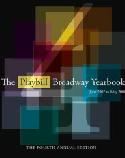SITE GUIDE
SEARCH
REVIEWS
REVIEW ARCHIVES
ADVERTISING AT CURTAINUP
FEATURES
NEWS
Etcetera and
Short Term Listings
LISTINGS
Broadway
Off-Broadway
NYC Restaurants
BOOKS and CDs
OTHER PLACES
Berkshires
London
California
New Jersey
Philadelphia
Elsewhere
QUOTES
TKTS
PLAYWRIGHTS' ALBUMS
LETTERS TO EDITOR
FILM
LINKS
MISCELLANEOUS
Free Updates
Masthead
A CurtainUp Review
Ragtime
|
Any man can get where he wants to if he's got some fire in his soul.—Coalhouse Walker, Jr.
|

Tateh: Mark Gerrard (Tateh) & Jordan Bloom (Little Girl) in Ragtime
(Photo: Jen Maufrais Kelly) |
The timing couldn't be better to revisit Ragtime, and thanks to the limitless imagination of director (and new APAC artistic director) Tom Wojtunik, the show brings history right up under your nose. Although you could argue that any given moment in time is a part of history, this past year of "change you can believe in"—the campaign and election of Barack Obama as President of the United States—suddenly made history seem fresh, alive, here and now. All at once, history was no longer something to be studied from a book, but something to be lived, shared and experienced firsthand.
In Ragtime, set more than a century ago in 1902, the tremors of change were already beginning to shake up the nation. Focusing on New York City and the surrounding area, Doctorow zoomed in on three discrete groups of people—white Anglo-Saxon Protestants (WASPs), African-Americans, and immigrants from Eastern Europe. Major characters rise from each group to jostle and crash into each other's lives as their precisely drawn personal borders overlap, their stereotypes and presumptions bend and break, and they contend with each other in new, often messy, and always seismic ways.
It seems fitting that Ragtime should appear again in New York not in a lavish, humdrum Broadway revival, but in an enormously ambitious and brilliantly executed new production that scales the show down to a very personal level. In their new performance space, housed within a local church, Wojtunik and set designer Michael P. Kramer have created an intimate setting that places much of the action in and around the audience. There's a traditional stage, but then the performers leap into the center playing area, floating in and out of the wings and up the aisles. This means that unlike the Broadway production, where the action was confined to the stage (at a safe distance), this Ragtime presents a multi-dimensional experience of the show that is designed to get under your skin. (Just try looking away when an actor is standing six inches away from you.)
The powerful opening sequence, for example, features the three groups simultaneously trying to avoid each other and keep an eye on one another. In a moment of disorientation, they get mixed up and wander around trying to figure out where they belong. As this sense of confusion seeps into the audience, where you can see not only the actors' pensive expressions, but also the concerned faces of your fellow audience members, it prompts the question: Where do I belong?
And this is the central query plaguing the characters: Mother (Anna Lise Jensen) feels useless and bored in her perfect, married motherhood; Tateh (Mark Gerrard) struggles with his ideals as the America he dreamed about for himself and his young daughter turns out to be a grim place; and Coalhouse Walker, Jr. (D. William Hughes), who plays ragtime music on the piano, attempts to win back the trust of his beloved Sarah (Janine Ayn Romano), while keeping his pride (and car) free from the race-embittered firemen who patrol the streets.
Working with these tangled characters and a mess of others—including Emma Goldman, Henry Ford, Booker T. Washington, Evelyn Nesbit, and J. P. Morgan—book writer Terrence McNally crafted his adaptation of this epic story, intricately weaving together these disparate stories. Much more than a history lesson, Ragtime soars because of its focus on ordinary lives and situations within the sweeping forces of history. And thanks to Lynn Ahrens and Stephen Flaherty's exuberant score, the stories are also bound together by the music itself: "It was the music of something beginning, an era exploding, a century spinning."
And did I mention that this show is not in Manhattan? Just a quick subway ride away on the N/W train, Astoria is an immensely diverse pocket of Queens. Filled with hard-working immigrants, aging life-long residents, and struggling young artists (and, really, anyone else you might imagine), this is a place where you can both see and hear change happening — from the slick new condos creeping up between mom-and-pop Greek diners to the rush of languages that dance through your ears on any street corner.
The set offers a representation of how these contrasting elements can be brought together. What appears to be an enormous bookshelf serves as both a display case for artifacts from the early 1900s (lamps, a bassinette) as well as a podium on which characters (also relics?) can perch. The backdrop is an old-fashioned American flag with tinges of Jasper Johns. With its imperfect borders and mottled colors, it's clearly a symbol of a nation and people whose livelihood was hard-fought and hard-won. Lighting designer Travis Walker teases out some excellent variations within the colors and shadows to match the mood of each scene.
There's not a weak link in this solid group of performers, who interlock as neatly as the shelves on the set. With her stunning voice and elegant style, Jensen slowly and skillfully reveals the fragility behind Mother's perfect mask. The unflappable Tateh, Gerrard is most convincing in his touching scenes with his young daughter as he tries to reassure her (and himself) that their lives will eventually improve. Among the supporting players, Stacie Bono (as sassy kewpie-doll Evelyn Nesbit) and Ricky Oliver (as Mother's feisty, fiery Younger Brother) are perfectly cast in their roles and give distinctive, memorable performances.
Scaled down from the huge Broadway cast, the chameleonic ensemble assumes different costumes and attitudes (and sometimes even accents) from one scene to another. To call them hardworking seems like an understatement. Revolving through more than 200 of designer David Withrow's lovely period costumes, the ensemble gives the show much of its vibrancy and sparkle.
But the show, in the end, really belongs to Coalhouse Walker. His tango with love, pride, and respect drives much of the plot and changes the fates of the other characters. Hughes has an immensely powerful stage presence, whether in the jovial "Gettin' Ready Rag" or in the stirring anthem "Make Them Hear You." As Sarah, Romano brings tremendous delicacy to "Your Daddy's Son," and together they inject a fresh, youthful energy into their powerhouse performance of "Wheels of a Dream."
That Coalhouse's "wheels" (his Model T) become the central symbol of the show seems like no accident. More than just a sign of success and prosperity, the car provides a way of moving up, out, and beyond. More than ever, Ragtime is a reminder of the wheels that were spinning even 100 years ago—and that carried us to a moment when Barack Obama could be elected as the first African-American President of the United States. Change, it seems, whether we believe in it or not, is always rumbling beneath the surface, and this Ragtime doesn't just encourage us to look for it. It compels us to see it.
To read Curtainup's review of the original Broadway production, which includes a complete song list, go here.
|
Ragtime Based on the novel Ragtime by E. L. Doctorow Book by Terrence McNally Music by Stephen Flaherty Lyrics by Lynn Ahrens Directed by Tom Wojtunik Music Direction by Daniel Feyer Choreography by Ryan Kasprzak Cast: Daniel Henri Luttway (Little Boy), James Andrew Walsh (Father), Anna Lise Jensen (Mother), Ricky Oliver (Younger Brother), Richard Vernon (Grandfather), D. William Hughes (Coalhouse Walker, Jr.), Janine Ayn Romano (Sarah), Matthew D. Brooks (Booker T. Washington), Mark Gerrard (Tateh), Jordan Bloom (Little Girl), Jonathan Gregg (Harry Houdini), Nathan Brisby (J. P. Morgan), Joel Abels (Henry Ford), Carmel Javaher (Emma Goldman), Stacie Bono (Evelyn Nesbit), Michael Edward Baker (Admiral Peary), Gabriel Rodriguez (Matthew Henson), Shawna M. Hamic (Kathleen), Alex Pearlman (Willie Conklin), Emily Thompson (Brigit), Marcie Henderson (Sarah's Friend), Tyson Jennette (Harlem Man), Vanessa Robinson (Harlem Woman), Timothy G. Avant and Teanna Berry (Harlem Pas de Deux Couple), Zekari Jackson and Jarred St. Johnson (alternating as Little Coalhouse) Set Design: Michael P. Kramer Costume Design: David Withrow Lighting Design: Travis Walker Sound Design: Kristyn R. Smith Running Time: 2 hours, 45 minutes, with 15-minute intermission Astoria Performing Arts Center, Good Shepherd United Methodist Church, 30-44 Crescent Street, Astoria (718) 393-7505 Tickets ($15 advance; $18 at the door) Tickets for students and seniors are $12. Tickets for children under 10 are $5. Performances: Thursdays, Fridays, and Saturdays at 8PM; Sundays at 6PM. From 2/5/09; opening 2/5/09; closing 2/22/09. Review by Amy Krivohlavek based on performance 2/07/09 |
|
REVIEW FEEDBACK Highlight one of the responses below and click "copy" or"CTRL+C"
Paste the highlighted text into the subject line (CTRL+ V): Feel free to add detailed comments in the body of the email. . .also the names and emails of any friends to whom you'd like us to forward a copy of this review. You can also contact us at Curtainup at Facebook or Curtainup at Twitter |
Try onlineseats.com for great seats to
Wicked
Jersey Boys
The Little Mermaid
Lion King
Shrek The Musical

South Pacific

In the Heights

Playbill 2007-08 Yearbook

Leonard Maltin's 2008 Movie Guide


Wicked
Jersey Boys
The Little Mermaid
Lion King
Shrek The Musical

South Pacific

In the Heights

Playbill 2007-08 Yearbook

Leonard Maltin's 2008 Movie Guide


